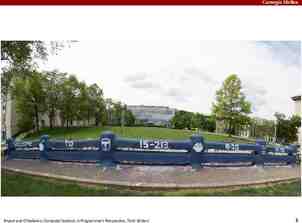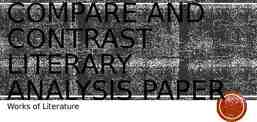Stephanie Thompson Student ID: 000273806 Western Governors
17 Slides95.42 KB
Stephanie Thompson Student ID: 000273806 Western Governors University M.Ed. Learning and Technology Mentor: Jennifer Stankiewicz JOT2 TASK 2: PLANNING OF INSTRUCTION
A. Learning Theories and Learners Overview Behaviorism: a teacher “provides the stimulus (learning material) and the student provides the response (Jackson, slide 18). If students cannot perform the behavior or master the content, the teacher will change the stimulus (different worksheet, note-taking instead of a debate, etc). Constructivism: “Individuals learn by constructing new mental representations of the environments in which they live.” (Dick, par. 1, p. 4). Learning occurs by students building on their background knowledge with new information by applying the new information to real life experiences. Cognitivism: Teachers teach their students by using their prior knowledge and “existing thinking stages” (Jackson, slide 30). These teachers realize what level the students are able to think at (complexity levels) and give information and activities that are age appropriate.
Behaviorism Learning is focused on a stimulus given and the reaction to the stimulus. Effective Uses: Promoting a desired behavior or learning a process. Rote memorization (multiplication tables) Lecture on a history topic Science experiment with dangerous chemicals (students should watch and not touch due to danger level).
Constructivism Focus is on reflection of experiences done in the real world to understand a concept. Effect Uses: Writing a journal entry about their school day (reflecting on information gained) Group projects that allow collaboration Dropping balls off a staircase to measure the rate of change as the ball descends.
Cognitivism The classroom uses what students know already to gain new knowledge. This theory uses thinking aids to help in the learning process. Effect Uses: Mnemonic devices (Never Eat Soggy Waffles- North, East, South, West) Math manipulatives (fraction squares, counting chips)
Lesson Plan (slides 6-8) Grade: 4th Subject: Science Title: Standard: SC.4.L.17.3 Trace the flow of energy from the Sun as it is transferred along the food chain through the producers to the consumers. Objectives: Students will construct a food chain, correctly demonstrating the flow of energy. Students will write a clear, focused explanatory text to demonstrate their understanding of energy through a food chain. Dramatic Food Chains Materials: computer paper, food chain examples, worksheet, pencil, glue, scissors, crayons, rubric, planning sheet. Vocabulary: food chains, food webs, consumers, producers
Mode l: 1. Show class the video on food chains. 2. Pass out copies of the essay and read it together. Explain that the most important part of the food chain is the sun. Go over this simple food chain with the students. “The sun’s energy is used by the plant to PRODUCE its own food, that’s why the plant is a producer. Then it is eaten by the insect, who is CONSUMING it, that’s why it’s a consumer. Then the insect is CONSUMED by the mouse, who is CONSUMED by the owl. The owl isn't consumed by anything, but when it dies, bacteria will break down its body to join the soil again, where a new plant will grow to start a whole new food chain!” Then point out that the owl is still getting it’s energy from the sun, because he’s getting his energy from the mouse, who got it from an insect, who got it from the plant, who got it from the sun.” Review that a few times if necessary. 6. Ask for a volunteer to come up and “act” as the sun. After getting them in place, ask for a volunteer to be the plant. Tell the student to “wave their leaves” toward the sun to get its energy. Next ask for a volunteer to be the insect to come “nibble” on the plant. Then ask for a mouse to come gobble up the insect. Then ask for an owl to “swoop in and catch that mouse.” Students will have fun acting it out. When everyone is in place, start with the beginning and review the transfer of the sun’s energy as they all act out their parts. Thank your volunteers and have them sit down. Formative Assessment: ask students comprehension questions as they construct their food chains.
Guided Practice: 1. 2. 3. 4. Independent Practice: Pass out the planning sheet. Give students time to draw out a food chain they will act out. Give students a copy of their food chain and circulate through the groups to assist as they work. Give 10 minutes to practice their food chain “performances” before beginning. Act out the food chains and review the food chains aloud, pointing out the energy transfer through the food chains. Students will receive a blank paper and a copy of a new food chain. They will cut out the animals and glue them together to create a new food chain. Finally, they will write a paragraph describing the sun’s energy through the new food chain. (Norby, n.d.) Summative Assessment: paragraph on energy through the food chain they construct (rubric used) Total Time: 1 day, 50 minutes
B. Learning Theory Used in Lesson Plan The learning theory I used in the lesson plan is the constructivist theory. I know this because the students are using real world food chains to act out and draw, using their prior knowledge of food chains to create the new food chain, and are working in groups to figure out how a food chain works. The teacher is only there to clarify and review concepts.
C. Adaptation of Lesson Plan I could modify the lesson plan to match the behaviorism learning theory. The changes I would make the modeling phase more than a video- I would also talk about each phase and have the students take notes as the video and I were speaking. In the guided practice phase, students would use their notes to create a list of the stages on a worksheet. They would then draw a flow chart of energy transfer. The teacher would go over the flow charts and then have the students write a paragraph explaining how the sun’s energy is transferred.
D. Lesson Plan Discussion The lesson plan that is the most beneficial to my instructional setting is the constructivist (original) lesson plan. In my classroom, there are 21 students that are very active. They do not have long attention spans and learn more when they do a project or something creative. The original lesson plan allows students to explore a new concept through their own exploration. These students are used to having a teacher tell them information and they have to memorize and perform a task. I want to move the students onto higher order thinking and have them come up with answers or theories in science class.
E. Effective Instruction Through the Use of Design Theories Theories of design help to produce effective instruction by knowing the level of participation a teacher and a student needs to contribute for learning to occur throughout a unit. Design theory is how we can design a unit of instruction for learning. It answers the questions of who the audience is and how the audience will learn throughout the unit.
F. Wiggins’ Backward Design Start at the end and work their way backwards. Strengths: learner focused Aviods an activity or lecture based classroom focuses on the end product and overall understanding to create a sense of purpose. Weaknesses: Limited ability to take a different path to get to the end result No focus on the journey to get to the end: it is all about the result (Meier, n.d.).
Gagne’s Nine Events of Instruction Event Strengths: 1. Gaining attention scaffold style and repetitions focused and clear with steps 2. Objective stated an instructor should take when lesson planning Small steps to understand large amounts of information 3. Stimulating Recall of Prerequisite Learning 4. Presenting stimulus material 5. Providing learning guidance Weaknesses: 6. Eliciting performance No room for creativity No ability for students to find 7. Providing feedback a new path to learn the same thing because of the nine steps format. 8. Assessing performance 9. Enhancing retention and transfer (Gagne, p.190, 1988)
Elements of Teaching for Understanding Strengths: Adjustments can be made as needed based on observations, assessments, and feedback. Multiple Intelligences Differentiated instruction Weaknesses: The learning objective may never be reached due to lack of time or too many adjustments. Cannot be used when a large standard is being covered or before a state standardized test as students must have the chance to cover all subject standards prior to state testing. (ALPS, n.d.)
G. Most Suitable Design Process The design process that I find most effective in my instructional setting is Gagne’s Nine Events of Instruction. Fourth graders are still young and require a large amount of scaffolding and repetition. I would like to have the students be more independent thinkers but they do need some level of teacher instruction and guidance still.
References ALPS. (n.d.). Introducing TfU: What is the Teaching for Understanding Framework? Retrieved from http://learnweb.harvard.edu/ALPS/tfu/about3.cfm Meier, E.B. (n.d.). Understanding by Design Wiggins & McTighe. [PowerPoint slides]. Retrieved from http://edtech4schools.pbworks.com/f/Understanding%20by%20Design %20Teaching%20Ellen%20Meier%20CTSC.pdf Dick, W. The Systematic Design of Instruction, 7/e, VitalSource for Western Governors University. [VitalSource Bookshelf version]. Retrieved from http://online.vitalsource.com/books/9781256819868/id/pg 4 Gagne, R.M. (1988). The events of instruction. In Principles of instructional design (pp. 185-204). Retrived from http://wgu.libguides.com.wgu.idm.oclc.org/ld.php? er attachment id 54778 Jackson, D. (n.d.). Learning Theory in the Classroom. [PowerPoint slides]. Retrieved from http://pdo.ascd.org/ScormEngine/defaultui/deliver.aspx? configuration istration CourseId b7c4157f-4c52-473f-b0e4-acc74bf83cc6!VersionId 4! OrgId 82a14a0f-f343-43dd-9fd9-8e76f9b43e75!UserId c85b2574-9e2f-4012-910d81b2b6eda18c!InstanceId 0 Norby, M. (n.d.). Dramatic Food Chains. [PDF document]. Retrieved from http://moodle.polk-fl.net/pluginfile.php/120834/mod folder/content/0/408%20%20%282013-2014%20Lessons%29/4-8/Dramatic%20Food%20Chains.pdf? forcedownload 1






















